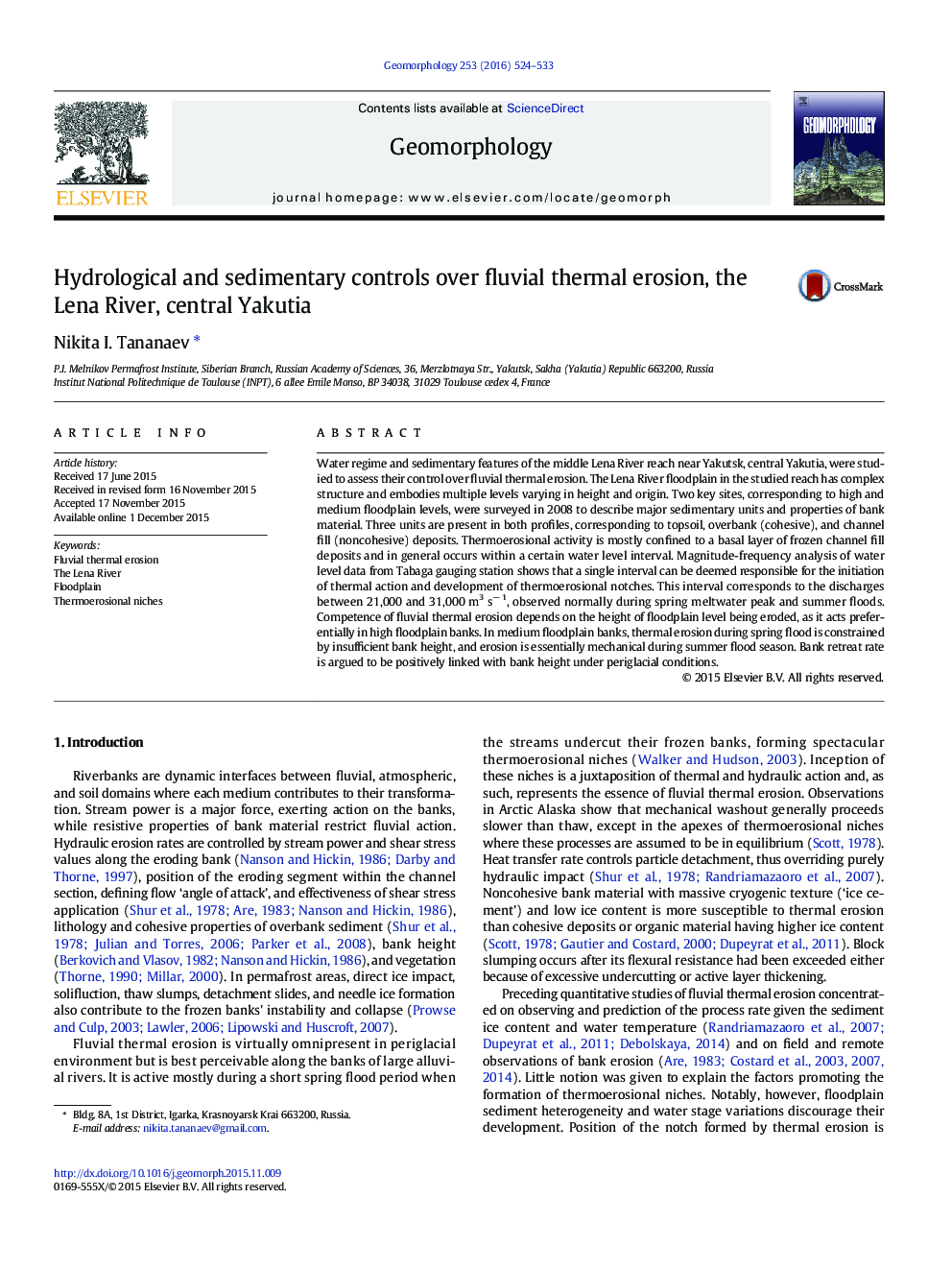| Article ID | Journal | Published Year | Pages | File Type |
|---|---|---|---|---|
| 6431755 | Geomorphology | 2016 | 10 Pages |
â¢Single water level interval is effective in promoting fluvial thermal erosion.â¢Fluvial thermal erosion acts preferentially in high floodplain banks.â¢Medium floodplain banks are mostly eroded by mechanical washout.â¢Fluvial thermal erosion rate is positively linked with bank height.
Water regime and sedimentary features of the middle Lena River reach near Yakutsk, central Yakutia, were studied to assess their control over fluvial thermal erosion. The Lena River floodplain in the studied reach has complex structure and embodies multiple levels varying in height and origin. Two key sites, corresponding to high and medium floodplain levels, were surveyed in 2008 to describe major sedimentary units and properties of bank material. Three units are present in both profiles, corresponding to topsoil, overbank (cohesive), and channel fill (noncohesive) deposits. Thermoerosional activity is mostly confined to a basal layer of frozen channel fill deposits and in general occurs within a certain water level interval. Magnitude-frequency analysis of water level data from Tabaga gauging station shows that a single interval can be deemed responsible for the initiation of thermal action and development of thermoerosional notches. This interval corresponds to the discharges between 21,000 and 31,000 m3 sâ 1, observed normally during spring meltwater peak and summer floods. Competence of fluvial thermal erosion depends on the height of floodplain level being eroded, as it acts preferentially in high floodplain banks. In medium floodplain banks, thermal erosion during spring flood is constrained by insufficient bank height, and erosion is essentially mechanical during summer flood season. Bank retreat rate is argued to be positively linked with bank height under periglacial conditions.
